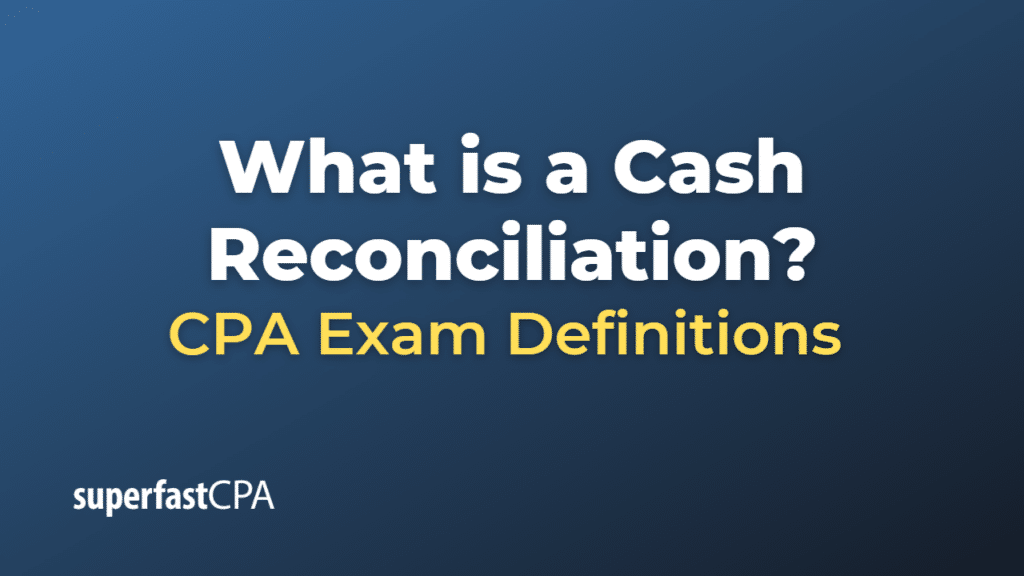Cash Reconciliation
Cash reconciliation is the process of verifying and confirming the accuracy and completeness of cash transactions recorded in a company’s accounting records, such as cash receipts, cash disbursements, and cash balances, by comparing them against external sources, such as bank statements, credit card statements, or other financial documents. The purpose of cash reconciliation is to identify any discrepancies, errors, or fraud and to ensure that the company’s financial records accurately reflect its actual cash position.
Cash reconciliation is typically performed on a regular basis, such as monthly or quarterly, and involves the following steps:
- Obtain the relevant documents: Gather the necessary financial documents, such as bank statements, cash receipts journals, cash disbursements journals, and general ledger cash accounts.
- Compare the balances: Compare the ending cash balance in the company’s accounting records with the ending cash balance on the bank statement, adjusting for any timing differences, such as outstanding checks or deposits in transit.
- Identify discrepancies: Investigate any differences between the accounting records and the bank statement, identifying errors, omissions, or unauthorized transactions that need to be corrected or explained.
- Adjust the accounting records: Make any necessary adjustments to the accounting records to correct errors, record missing transactions, or reverse unauthorized transactions.
- Document the reconciliation: Prepare a cash reconciliation report that outlines the starting and ending cash balances, any adjustments made, and the reconciled cash balance. This report should be reviewed and approved by a higher-level manager or supervisor to ensure the integrity of the reconciliation process.
- Monitor and improve: Regularly review the cash reconciliation process and implement improvements to reduce the risk of errors or fraud, such as strengthening internal controls, segregating duties, or providing employee training.
Cash reconciliation is an essential internal control mechanism that helps organizations maintain accurate financial records, detect errors or fraud, and enhance overall financial management.
Example of Cash Reconciliation
Let’s assume that you own a small retail store, and you are performing a monthly cash reconciliation for the month of March. Here’s an example of how the cash reconciliation process would work:
- Obtain the relevant documents:
- Bank statement for March
- Cash receipts journal for March
- Cash disbursements journal for March
- General ledger cash account for March
- Compare the balances:
- Bank statement ending cash balance: $15,000
- General ledger cash account ending balance: $14,600
- Identify discrepancies: Upon investigation, you find the following differences:
- There are two outstanding checks totaling $300 (i.e., checks issued by the company but not yet cleared by the bank).
- There is a deposit in transit of $200 (i.e., a cash deposit made by the company but not yet reflected in the bank statement).
- Adjust the accounting records: No adjustments are needed in this case, as the discrepancies are due to timing differences between the company’s records and the bank statement.
- Document the reconciliation: Prepare a cash reconciliation report that includes the following information:
- Bank statement ending cash balance: $15,000
- Add: Deposit in transit: $200
- Subtract: Outstanding checks: $300
- Reconciled cash balance: $14,900
In this example, the reconciled cash balance matches the general ledger cash account ending balance ($14,900), which means the cash reconciliation process is complete.
- Monitor and improve: Regularly review the cash reconciliation process to identify any issues or inefficiencies, and implement improvements as needed. In this case, you might consider implementing a more robust system for tracking outstanding checks and deposits in transit to make future cash reconciliations smoother and more efficient.













